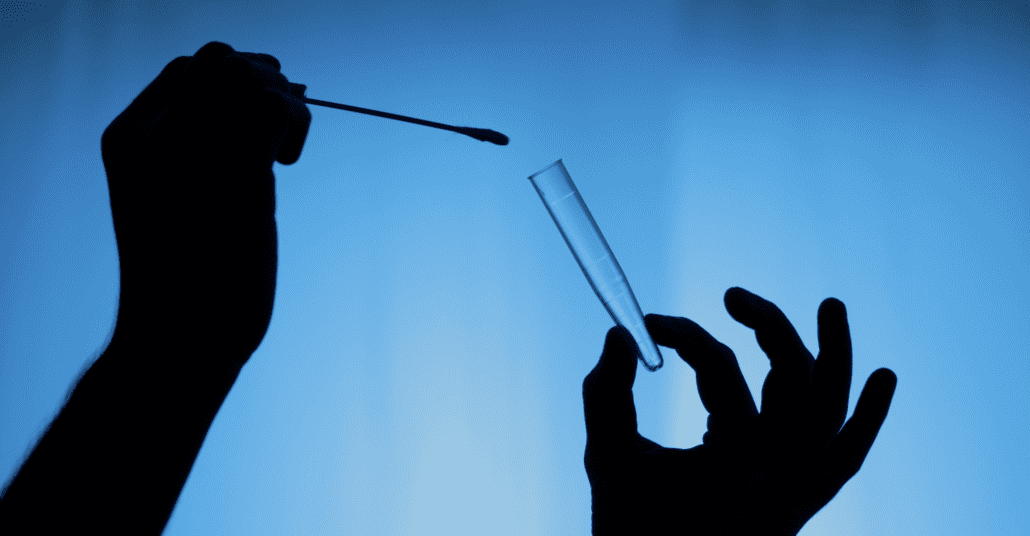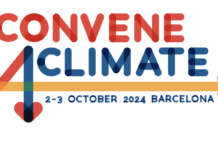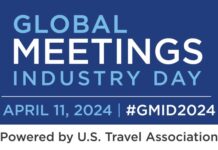The days of expecting to be able to avoid anyone catching COVID at a big event are probably over.
When Professional Convention Management Association (PCMA), in its 14-day post-event report, publicly announced that 96 of the 2,300 verified in-person attendees at its recent Convening Leaders conference in Las Vegas tested positive for COVID (despite requiring full vaccination and masking, no testing), its transparency moved the industry forward. Today’s reality, according to Amanda Schleede, Founder and CEO of risk mitigation firm Attend Safe, is no longer about aiming for zero cases at events, but about risk mitigation by testing, testing, testing.
Prevue recently caught up with Schleede to find out more about this new phase of managing COVID at meetings.
Prevue: How can planners adjust to a new reality where it has to be expected that avoidance is no longer possible and some number of meeting and event attendees at a big event likely will test positive for COVID?

Schleede: All aspects of an event must be considered in providing a safe in-person event and mitigating as much risk/exposure as possible. This includes mask enforcement, hand sanitizing stations, presentation and serving of food and beverage (F&B) at events, appropriate social distancing in meeting spaces, etc.
The other area of focus that’s most important right now is providing your attendees with immediate and convenient access to on-site testing. Each individual experiences COVID in a different way, so having an easy and visible way for attendees to get tested — even for the slightest feeling of being “off” — is the best way to combat having an attendee stay at an event, interacting with others while being infectious.
The added level of contact tracing in a non “Big Brother” way provides additional layers of protection for the event and attendees. If you’re able to identify those who came into contact with a COVID-positive individual during the event, you’re not only mitigating the risk of continued spread (and becoming a dreaded “super spreader” event) but you’re also able to identify attendees who require additional COVID risk mitigation not only for the on-site event but for their travel home to their family and friends.
Right now, attendees go to an in-person event at their own risk. It’s how the event coordinator/host prepares and provides an extra level of protection for those attendees that’s going to make their in-person participation safer, healthier and also lower anxiety. Let’s be honest: We want to get together again. People miss human interaction (especially for conferences and events were direct interactions are key to your business and future). Virtual meetings don’t have the same feel as in-person. But we need to meet in-person smart and with a plan!
Prevue: What should event planners do at this point in the pandemic to ensure health and safety related to COVID — additional testing? Require proof of boosters in addition to full vaccination? Contact/ proximity tracing? What’s the best way to handle COVID risk mitigation as the pandemic continues to evolve?
Schleede: For event planners, it’s important to have the data around the vaccination and non-vaccination rate of their attendees. But in our current work, we are seeing a high number of COVID-positive vaccinated attendees. Therefore, testing — and testing throughout the event — is key.
We’re seeing a big shift from requests for symptom tracking and temperature taking to testing. Because everyone experiences COVID differently, you’re not going to “catch” a COVID-positive individual with daily symptom tracking and/or temperature checking. You’re going to identify those individuals with testing. Plus, we’ve had many cases where events do multiple day mandatory testing and someone who tested negative 48 hours earlier now test positive. Therefore, we’re able to identify that person, isolate them from the group and “activate” the quarantine protocols we established before the event began.
Also, I can’t stress enough that you need to be prepared for the worst-case scenario. You may never act on the plan, but you want it in place before the event begins — you don’t want to be creating the plan on the fly.
Getting back to your question: It’s important to know your vaccination rate and to test your attendees. It’s difficult right now to require boosters as well because it’s not a federal mandate at this point. But if you are asking for vaccination information, then yes, ask for booster information as well — the more data the better!
And yes, a non-Big Brother contact-tracing technology is a necessary follow-up to testing. You need to be able to identify those who had significant contact with an infected party, and to have a plan for further isolation/mitigation based on that significant contact. There are ways to do all of this while still maintain privacy.
The key is communication! Be open and provide as much information as you can so attendees are aware before they arrive of what they will need to do and what requirements they need to meet to attend the event. Another key is getting buy-in/acceptance from senior leadership and having a zero-tolerance policy. Everyone must adhere to the same level of expectations — once you “break the bubble” you can’t put it back together.
Prevue: What are your clients requesting to help them manage COVID-related health and safety at their events at this stage?
Schleede: Clients are moving away from daily symptom tracking and temperature checking. We do offer it as a service, but the best way to identify a COVID-positive attendee is through testing.
Our clients are moving to a pre-event vaccine/test verification process. This can include mandatory vaccination status for attendance and/or testing regardless of vaccination status. Also, because testing is getting harder and harder to find in some locations and/or the results timeframe is too long, we are also seeing an uptick in clients requesting that we provide all attendees with an EUA OTC at-home test kit to use and submit via our web-based technology for verification before they travel to the event. This is one level of risk mitigation that is typically the first step of the event testing protocols we establish with the client.
Additionally, most of the events we’re supporting are putting their budget towards a heavy testing protocol to include mandatory testing upon arrival — meaning you must receive a negative on-site rapid antigen test before you’re issued your badge/credentials for the event, and then every attendee must be retested (mandatory for continued attendance) anywhere between daily to every 72 hours throughout the event.
Additionally, given the difficulty in finding testing locations locally with some venues, we’re also seeing more of our clients providing departure testing for domestic or international travelers. For domestic travelers, we’re providing them with the means to make sure won’t return home and expose friends and family; international travelers require testing on site to meet international airline and country entry requirements. Clients appreciate having a way to provide their attendees with a full VIP experience by communicating through actions and services that they care about their attendees’ wellbeing while on site and after attendees depart to return home to loved ones.
Another bonus our clients love is being able to send attendees home with an EUA OTC test kit as a parting gift so they can test themselves at home and report the results. For Attend Safe, the results would be provided via our secure web-based application. This provides event planners with the data they need to keep their attendees updated regarding infection rates and/or exposures while they were on site.
You May Also Be Interested In…
How to Make Events Safe in the Omicron Era: We Asked An Expert
New Study Reveals Changing Meetings Landscape
How Omicron is Affecting Early 2022 Events











